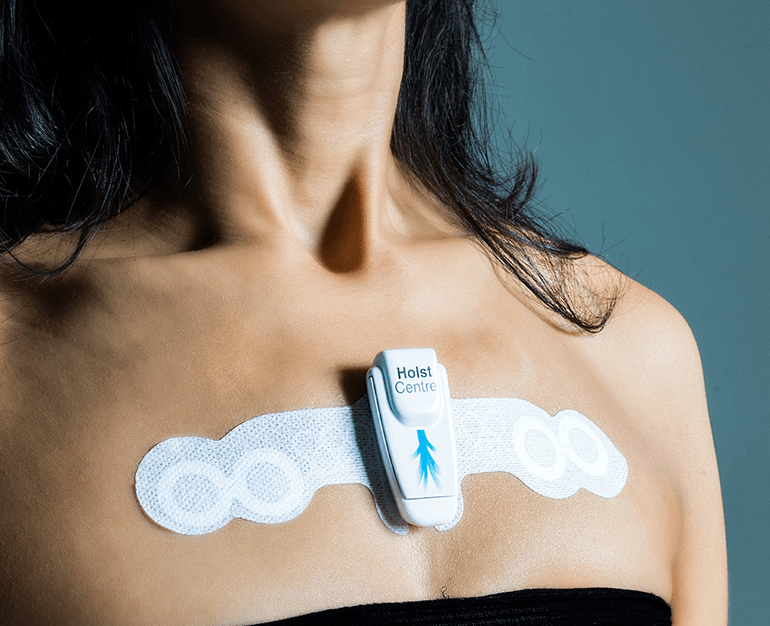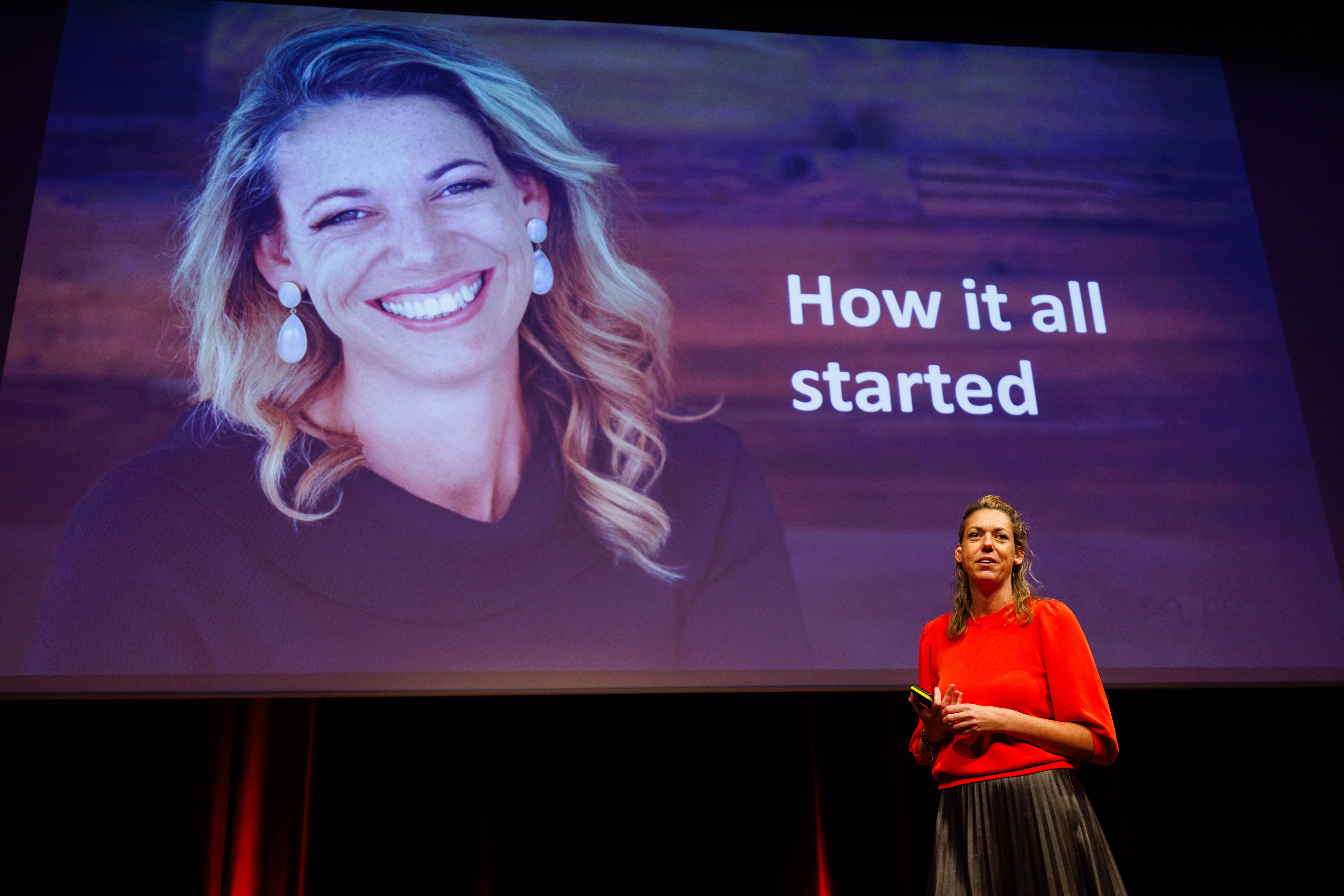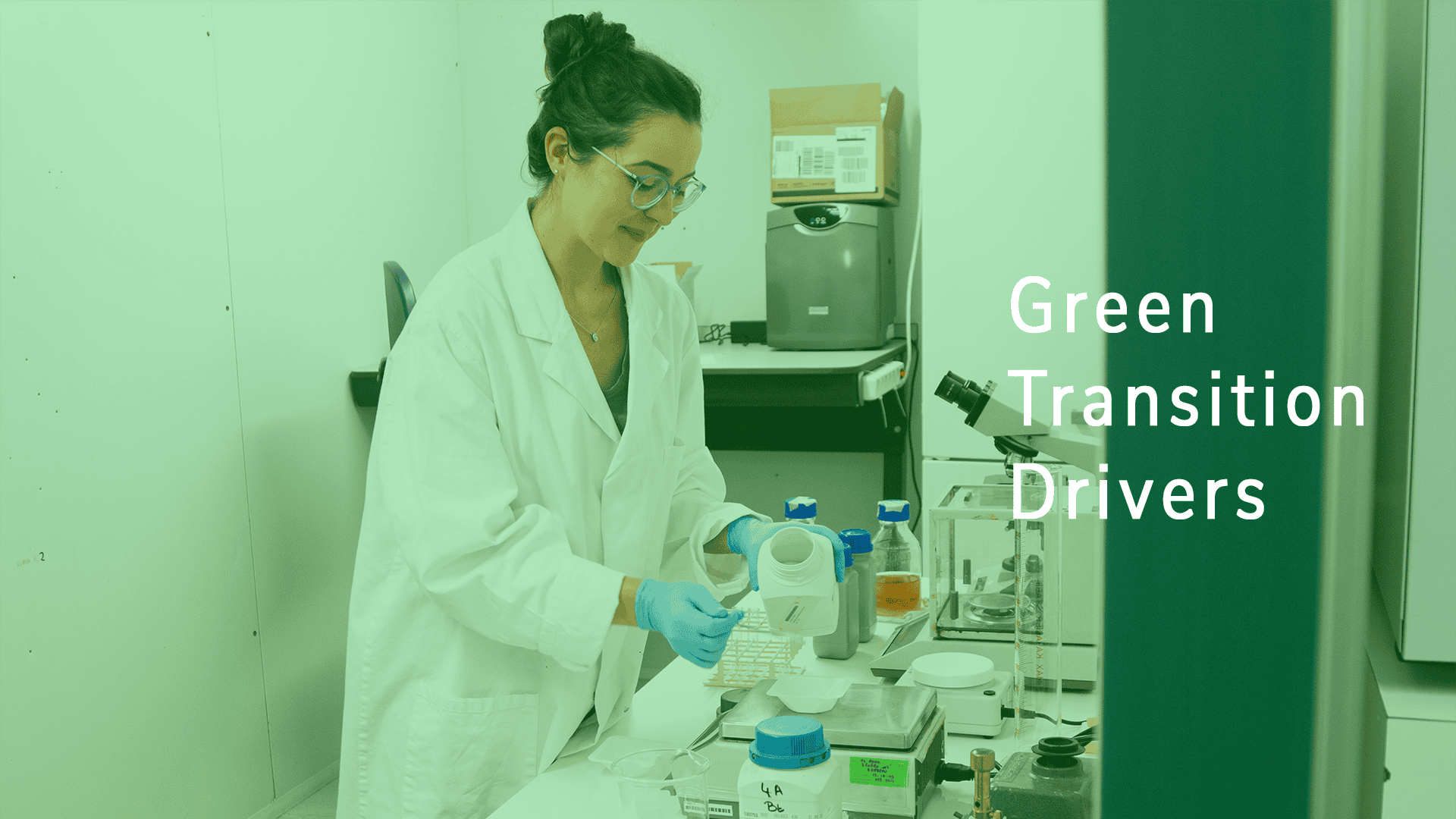
Did you know that currently, in the Netherlands, one in every six people with a job already works in health care? We weren’t aware of that either until Carmen van Vilsteren laid it out for us in her presentation at High Tech Next. Van Vilsteren is president of the Top Sector Life Sciences & Health and director of the Eindhoven-based e/MTIC. She was one of the speakers at the High Tech Campus year-end conference on Dec. 8, where Eric Rondolat (Signify) and Klaas Dijkhoff (Brainport booster), among others, also climbed the stage.
Van Vilsteren’s message: healthcare is already under heavy pressure, but the demand for even more healthcare personnel will only increase in an aging society. And so, transformations are needed. With a bit of good will, she sees five of them coming our way. And in all five, Brainport Eindhoven plays a prominent role, she demonstrated using a series of examples of startups, trends, and scientific achievements.
Transformation 1: from manual to automated
The digitalization of society is taking place in all sectors; healthcare is – fortunately – not exempt from it. Robotization is linked to this, a trend cautiously visible in initiatives around surgical robots for ophthalmology, skull treatments, and general surgery. “But quite frankly, those are not really robots yet, of course; they are mainly devices that can translate the doctor’s large human movements into extremely small ones. But the start is there.”
In addition to robots, Van Vilsteren sees digitalization reflected in decision-making processes increasingly supported by artificial intelligence. “That way, you get models that can predict the consequences of certain choices.” Virtual reality has appeared in mental health care, another consequence of the same trend. VR glasses with various simulations help patients overcome their limitations.
One overriding principle applies to all these developments: the more they are fed with data, the better they will work. “Data is key.”
Transformation 2: From intramural to extramural, from the professional to the consumer
The ultimate goal of this trend is the creation of bedless hospitals. Van Vilsteren: “A hospital becomes the place where you come for treatments that require complicated equipment, but they are not necessary for your recovery.”
Many millions of people are already part of this trend, as evidenced by more than 350,000 health apps available in the app store. The better these apps start communicating with our practitioners, their impact will be more far-reaching. “Thanks to tools like these, patients can continue to recover at home almost immediately after their treatment. All progress – or lack thereof – is closely monitored, and only when necessary is there contact again. You don’t have to make an appointment at the hospital for every check-up.”
A startup like Nemo Healthcare has already understood this principle well, Van Vilsteren shows. “Or look at Luscii, a healthcare platform that can monitor patients remotely. It gives patients control over their own care, and prevents unnecessary checkups and hospitalizations. This allows doctors to devote more time and attention to the patients who need it most.”
Just as many developments get a boost these days thanks to fanatical student teams, so it is in this sector, Van Vilsteren shows. Most prominent is SensUs, an international competition to devise solutions around common disease conditions.
The main concern for this transformation is affordability. “We desperately need working business models and a well-functioning ecosystem.”
Transformation 3: from chronic disease and care to cure
We have seen them all pass by at Innovation Origins: a successful treatment for partially paralyzed people, artificial heart valves that become part of the body by themselves, a pacemaker in ones head to resolve migraines, and smart biomaterials for the application of “regenerative medicine”.
The pace at which the examples are piling up is encouraging, Van Vilsteren says. “Onward, Xeltis, Salvia, RegMedXB are well known to most stakeholders by now. But there is already so much more going on that we can really already speak of a trend showing the move from care to cure. Many of these applications are based on cell and gene therapy but also look at the developments around organ-on-a-chip, where body parts outside the patient’s own body receive treatment. One particular example is the artificial womb; ideal for premature infants who cannot yet breathe on their own.”
As is often the case, ethical questions also arise. Van Vilsteren: “Would you call the aging process a chronic disease, or do we still shy away from that? Either way, hard work is being done on methods to slow down or even stop that process altogether.”
The costs for such developments and treatments are skyrocketing, but no doubt that is only a matter of time. Van Vilsteren thinks it is time for a medical version of Moore’s law, which says that technological advances can cause the number of transistors in a chip to double every two years, with direct consequences for the price per chip. “I think there is every reason for a Law of Cell and Gene Therapy that shows the price will continue to drop every few years.”
Transformation 4: From care and cure to prevention
This is another transformation that threatens to falter due to an apparent lack of revenue models. But that could soon change, says Van Vilsteren. “In fact, you create a serious risk if you don’t invest in prevention. The healthcare infarct is already there; without prevention, it will only get worse.”
We may think most problems are solved by technology, but the opposite is true, she says. “Prolonging our lives is only 10% affected by technology. The rest is in our behavior and environmental factors.” No smoking, no alcohol, healthy eating, more exercise, better air quality, these are factors many times more important than the latest medical inventions. It is clear that it costs money to influence those factors, but those who do not invest in them shoot themselves in the foot.
Van Vilsteren draws hope from the Icelandic model, where she believes they have succeeded in creating a conclusive payment model.
Transformation 5: from global to planetary
Climate change directly impacts our health, so it would be wise to include planetary developments in our approach to health care. “Healthcare itself, by the way, also contributes to that climate change,” Van Vilsteren shows. “In the Netherlands, for example, 7% of our carbon footprint is caused by healthcare activities. And in addition, healthcare is still a huge contributor to waste, if only through the one-time use of tens to hundreds of materials around every single treatment.” Not surprisingly, an agreement was recently signed to make healthcare more sustainable and, ultimately, even circular.









